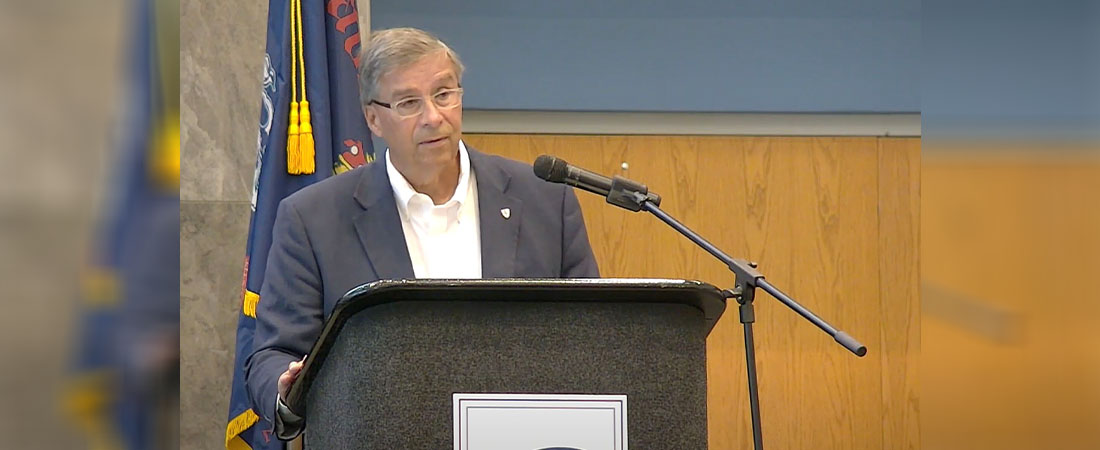
Craven County is set to receive $15.5 million over the next 18 years as part of the state’s share of a nearly $50 billion national opioid settlement with distributors and manufacturers.
According to information presented at the June 29 Craven County Opioid Epidemic Response Annual Meeting, the county is estimated to receive $15,557,608 between 2022 and 2038. The county has already received $1,116,187 of that amount for fiscal year 2022-23.
According to Amber Parker, Craven County Opioid Epidemic Response coordinator, the largest part of the funding will come over the next three years: $2,127,574 in 2023-24; $1,121,257 in 2024-25; and $1,248,229 in 2025-26. The payments are scheduled to fall to $379,943 by 2038.
“The payment schedule is front-loaded to provide higher levels of funding initially and then the annual payments will reduce over time,” Parker said.
With that money comes certain stipulations on how and where it can be spent that are outlined in a memorandum of agreement the state requires from each of the 100 counties and seven municipalities that are receiving a share of the settlement money. The MOA will remain in effect until one year after the county spends the last of its opioid settlement funds.
The MOA includes a handful of broad requirements that the county must fulfill:
-Establish a special revenue fund, which was done as part of the county’s 2023-24 budget. Funds can carry over from year to year, so it is not necessary to spend the funds in the year they are received.
-Authorize spending ahead of time in a budget or resolution, which must include the strategy being authorized and the period of time in which the funds are to be spent.
-Follow all reporting requirements. The county is required to submit all expenditure authorizations from the board of commissioners and complete annual financial reports for each strategy funded within 90 days of the end of the fiscal year. The county must also provide an annual impact report based on each strategy that’s funded.
-Hold an annual public meeting inviting all municipalities to offer input as to the use of the county’s opioid settlement funds.
The MOA also offers local governments two remediation strategy options to choose from: fund one or more items from a list of evidence-based, high-impact strategies to address the epidemic without any additional strategic planning required; or fund one or more items from a shorter list of strategies after engaging in a 14-step, collaborative strategic planning process.
Craven County Opioid Outreach Coordinator Jasmine Canady described Option A as a “don’t reinvent the wheel” plan that includes evidence-based addiction treatment such as MAT, or medication-assisted treatment, that uses methadone and other medications approved by the FDA; recovery support services, including funding for peer support specialists and case managers, that connect individuals to services; and support for programs that offer housing for those in treatment, recovery or receiving MAT. The funds can be used to assist with rent, utilities or any other fees related to housing.
Other Option A initiatives that can be chosen are:
-Employment-related services such as job training, resume building, interview coaching, job transportation, and clothing,
-Early intervention programs focused on prevention, early identification for children or adolescents struggling with problematic use of substances, and school system prevention education.
-Distribution of the drug Naloxone, which is used to reverse opioid overdose.
-Post-overdose response team that can reach out to individuals 24-72 hours after an overdose to connect them to support services.
-Programs that provide syringes, Naloxone, Fentanyl test strips and other harm reduction supplies.
– Criminal justice diversion programs that connect individuals at risk of incarceration to services or treatment instead of arresting them.
-Addiction treatment for incarcerated persons in detention centers or prisons.
-Re-entry programs that meet individuals as they are being released from incarceration and immediately connect them to housing, transportation, employment and other services they need.
Option B offers innovative ways to practice those strategies that will require a “community, collaborative strategic process” Canady said.
Option B is broken up into Treatment, Prevention, and Other Strategies and includes addressing the needs of pregnant or parenting women and their families and preventing the over-prescribing of opioids.
The battle comes to Craven County
In 2017-18, the Craven County Board of Commissioners initiated the Craven County Opioid Task Force consisting of 30-40 people studying the issue who then brought recommendations back to the county. The Opioid Task Force Coordinator position was created in 2019 along with a community outreach budget for prevention and education efforts.
According to Parker, the program and its role is going to “expand tremendously” as a result of the national opioid settlement.
Parker said Craven County’s current opioid remediation strategies include community outreach and prevention efforts; the creation of a jail navigator position and an additional narcotics investigator position; Narcan/Naloxone distribution; funding for the Realize U 252 Sober Living House; treatment and recovery related transportation provided by CARTS; and funding and support of K-9 and DARE programs.
The county is also collaborating with Recovery Alliance Initiative, a Chapel Hill nonprofit that supports organizations focused on prevention and recovery.
According to information presented by Tyler Harris, community collaborative volunteer with RAI, Craven County is one of the area’s in the state that could benefit most from the influx of opioid settlement funds.
Based on data from North Carolina emergency room departments, Harris said Craven County ranks eighth in the state in terms of the percentage of opioid overdose ER visits based on population from June 2022-May 2023. Craven is also third among states with the largest percentage of suspected opioid overdose encounters based on EMS data.
Harris said confronting the opioid crisis will involve multiple agencies across the county working together.
“We know we can’t arrest our way out of this situation,” he said. “Our law enforcement is doing a great job in my personal opinion in the county but it’s going to take more than that. We have to collaborate together to find solutions.”
By Todd Wetherington, co-editor. Send an email with questions or comments.

